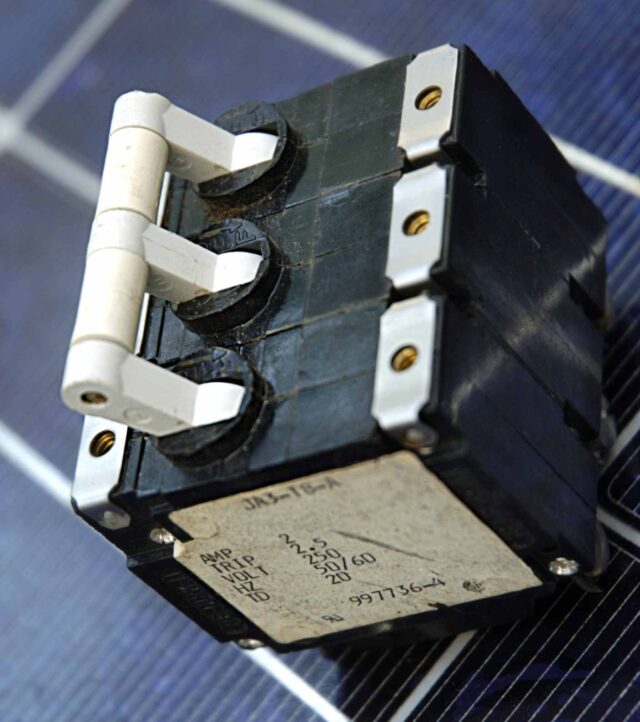Introduction
Electricity is a big friend of humanity, who serve to make our lives more and more easy. But on the other hand, the use of electricity without proper protection can cause some serious harm to equipment and even human life. Many protection devices are used to protect against the danger of electricity. There are many protection devices, but the MCB is one of the most widely used. In this article, you will get a lot of information about MCB, including its Functions and benefits. You will also learn about why MCB tripped most of the time.
So, without wasting further time, let’s start knowing about MCBs.
MCB (Miniature Circuit Breaker)
There are many electrical protection devices in the market, and MCB is also part of the protection device family. MCB is an abbreviation for “Miniature Circuit Breaker.”It works on the principle of “electromagnetic induction.” The Miniature Circuit Breaker is a switch in any electrical system for turning on and off the electrical current.
Functions of MCB (Miniature Circuit Breaker)
MCBs work automatically to make or break the connection of the main power source to the equipment and appliances. “Miniature Circuit Breaker” continuously senses the current flowing through it. Every MCB has a unique current limitation. Whenever the current flowing through MCB crosses the current limitation, the “Miniature Circuit Breaker” automatically switches off the power supply.
Along with the automatic switching function, the “Miniature Circuit Breaker” can also be used as a normal “ON” and “OFF” switch by manual method.
Time delay switching device
You can also use MCB as a time delay switching device in electrical systems. In this function, the MCB works continuously in normal operation even after detecting high current overflow for a specific “Delay Time.” The MCB’s “delay time” may be manually adjusted; even if you do, if an electrical short circuit occurs, the “MCB” will shut down in milliseconds.
Why you must install MCB in the electrical system?
The word ‘fault’ describes a condition arising from malfunctioning some component or incorrect electrical practices in an electrical system. Not clearing a fault in a timely manner may result in a very dangerous situation, such as an explosion or fire.
Furthermore, the longer the fault remains in the system, the more it deteriorates its health, resulting in high energy losses and increased thermal stress. As faults pose a threat to the system and must be rectified at the earliest opportunity, a device like the “Miniature Current Breaker” that clears the fault and has a shorter opening time can reduce thermal stress while saving the let-through energy.
Read More: A Comprehensive Guide About Relay And How To Test A Relay With A Multimeter?
Why MCB tripped in electrical system?
What is meant by “trip”?
MCB switches off the main power to secure the entire electrical system in case of access to the current flow. The “Switching Off” is called “Trip” in electrical engineering.
There are several reasons present behind the tripping of MCB. Mainly three faults can make an MCB tripped and shut off the power supply to the electrical system or circuit. The main reasons of the “MCB Triped” state happening are as follows:
- Short-circuiting
- Overloading
- Fault with the grounding of the electrical system
Following is the detail of appearing “MCB tripped” state.
Short-circuiting
The second reason of the “MCB Tripped” state is short-circuiting within the electrical system. Short-circuiting is very dangerous among all the fault that can occur in the system. An electrical current flowing at several times the normal value occurs when a live conductor comes into direct contact with a neutral conductor (Direct contact between positive and negative in the case of DC).
Several reasons are present that result in short-circuiting in the system. The reason of short-circuiting are as follows:
- Wrong wiring in the electrical system.
- Damage of wires due to extreme heat.
- Malfunctioning of electrical equipment or appliances.
If any of the aforementioned short circuits occur in the system, the MCB immediately enters an “MCB tripped” condition, which secures the whole electrical circuit.
Overloading
Overloading is a common fault that is happened in the electrical system. Overloading is when a circuit or device draws more current than it can safely handle. Overloading occurs when several appliances are connected to one power outlet so that they all draw more current than the socket can supply.
“MCB Tripped” state guarantee the safety of appliances during the overloading of an electrical system. Whenever the appliances draw more current above its limitation, MCB immediately switches off the main power by going into the “MCB Tripped” state.
Pros of MCB (Miniature Circuit Breaker)
The miniature circuit breaker had a lot of benefits. Some pros of MCB are written below:
- The sensitivity of MCB in detecting the current changes is very high.
- You can get an immediate response from MCB when short-circuiting happens in the electrical system.
- In contrast to fuses, MCBs can be reused since no wires need to be changed.
- It is also too much less expensive to replace an MCB.
FAQs (Frequently Asked Questions)
When the current in a circuit exceeds a predefined value, a fuse self-destructs, and the current flow is stopped. An MCB is a resetting circuit protection device that stops the flow of current through the circuit during a fault.
In the market, there are currently six types of MCBs available. The name of these types are as follows:
· A type MCB
· B Type MCB
· C Type MCB
· D Type MCB
· K Type MCB
· Z Type MCB







